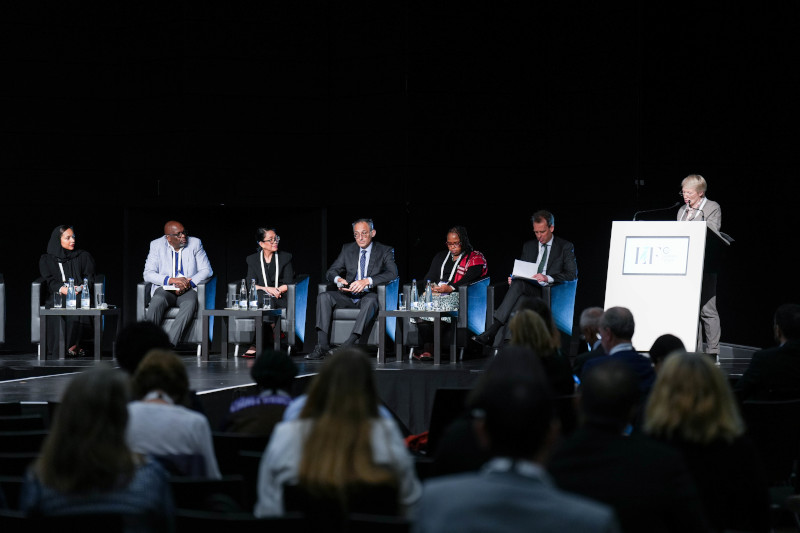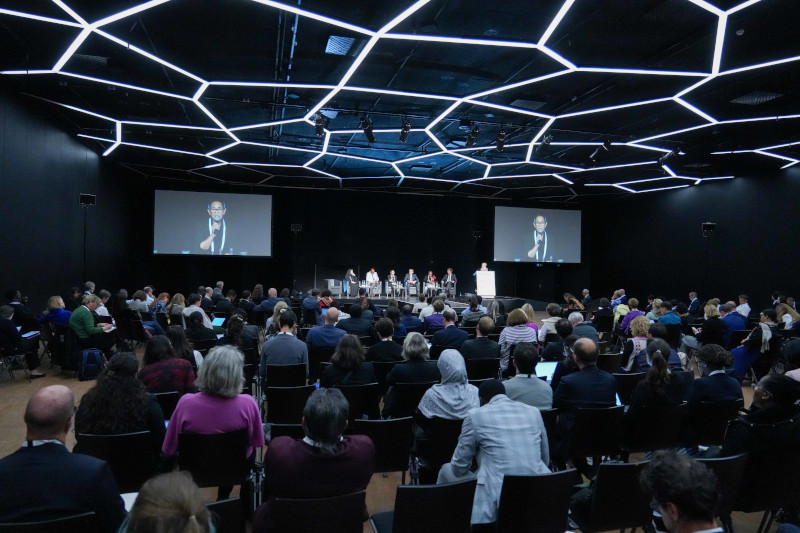August 14, 2025
When Lucita Jasmin, Director of Sustainability and External Affairs at APRIL, took the stage at the last IUCN Leaders Forum in Geneva, her message was clear: Conservation financing must evolve, and fast.
At the heart of her presentation was the Restorasi Ekosistem Riau (RER) program, a model that integrates nature directly into business operations. “We’re advocating for a transformation of the business model, where nature is actually integrated into the business approach,” Lucita shared. It’s an ambition that resonates deeply in Asia, a region where 60 percent of GDP depends on healthy ecosystems, yet nature remains critically underfunded.
Despite the clear economic stakes, investment in nature-positive initiatives lags far behind where it needs to be. As Lucita noted, few companies have fully grasped their dependency on nature’s services; many continue to treat conservation as an externality, only reacting when extreme weather or supply chain disruptions force the issue.

In an effort to bridge this funding gap, APRIL committed US$100 million over a decade to kickstart restoration efforts under the RER program. Building on this, in 2020 APRIL launched the conservation fund, a mechanism that channels US$1 for every ton of fiber delivered to the mill, back into nature. Today, the company has also achieved 77 percent of its ambitious 1-for-1 target — conserving one hectare of forest for every hectare of plantation.
Through internal levies alone, nearly US$15 million was raised in 2024 to further conservation efforts, bringing the total contribution to more than US$60 million since 2020. It’s a circular approach that isn’t just about stewardship; it’s about securing the very future of APRIL’s business.
As Lucita emphasized in Geneva, “long-term viability always starts with the long-term sustainability of the broader natural ecosystem.” For APRIL, conservation is more than just a CSR commitment — it’s a strategy that makes good business sense.

The RER program has helped operationalize what Lucita calls the “production-protection” model, which involves balancing economic activity with ecosystem preservation. By carefully managing nearly 1 million hectares of forestry concessions, with 607,000 hectares dedicated to plantations and 465,000 hectares to conservation, APRIL is demonstrating how conservation investments can be embedded into core business operations.
Now, this model is poised for expansion. Together with its parent company Royal Golden Eagle (RGE), APRIL plans to extend similar conservation financing approaches to operations in Brazil and China, signaling a broader commitment to integrating natural capital into global business practices.
Looking ahead, Lucita believes the next chapter of conservation finance will be written through deeper collaboration with local communities. “Nature protection is really underpinned by socio-economic environment,” she said. “You cannot divorce one from the other.”
This philosophy underpins APRIL’s Community Conservation Partnerships, an initiative offering support to villages that commit to preserving forest cover. Participating communities receive program support, including equipment and infrastructure, equivalent to US$10,000. Before a village can join the program, APRIL conducts field checks to assess their viability. This is then followed by regular supervision for the duration of the program to ensure its sustainability.
At the same time, APRIL is exploring the potential of carbon credits. RER has the capacity to generate more than 300 million tons of CO₂ equivalents, which represents a significant environmental opportunity. Yet, as Lucita pointed out in Geneva, a mindset shift is needed. She believes companies are “more comfortable investing in nature than paying for ecosystem services,” and bridging that information gap will be critical for scaling impact.
Ultimately, APRIL’s work shows that protecting nature and building profitable businesses are not opposing goals — they are two sides of the same coin. By embedding conservation into business strategy, channeling funds through innovative mechanisms, and partnering closely with communities, APRIL is helping to create a future where financial success and ecosystem health go hand in hand.
The challenges in conservation financing are formidable. But with pragmatic leadership, scalable models, and a renewed sense of urgency, companies like APRIL are proving that a nature-positive future is not just possible — it’s essential.